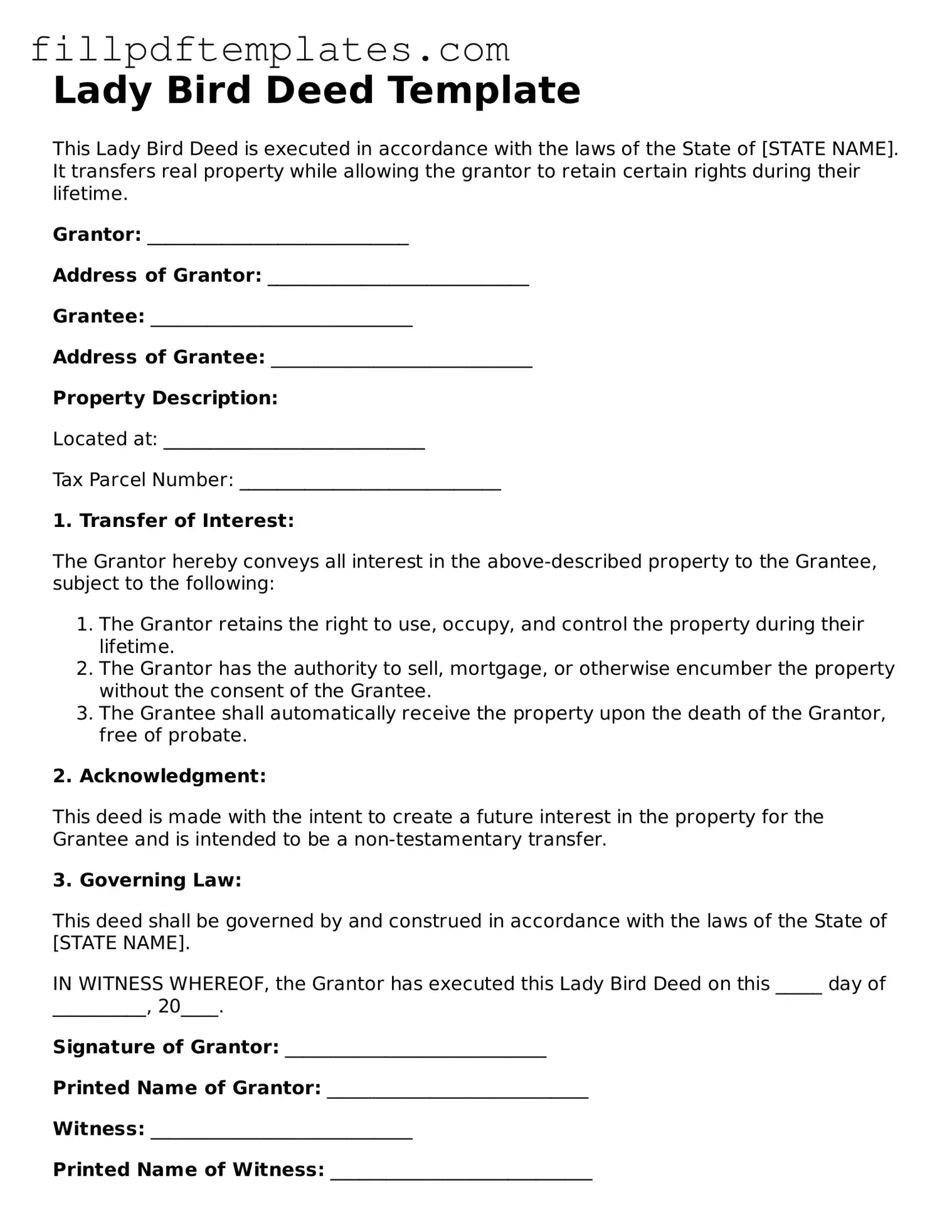Lady Bird Deed Template
This Lady Bird Deed is executed in accordance with the laws of the State of [STATE NAME]. It transfers real property while allowing the grantor to retain certain rights during their lifetime.
Grantor: ____________________________
Address of Grantor: ____________________________
Grantee: ____________________________
Address of Grantee: ____________________________
Property Description:
Located at: ____________________________
Tax Parcel Number: ____________________________
1. Transfer of Interest:
The Grantor hereby conveys all interest in the above-described property to the Grantee, subject to the following:
- The Grantor retains the right to use, occupy, and control the property during their lifetime.
- The Grantor has the authority to sell, mortgage, or otherwise encumber the property without the consent of the Grantee.
- The Grantee shall automatically receive the property upon the death of the Grantor, free of probate.
2. Acknowledgment:
This deed is made with the intent to create a future interest in the property for the Grantee and is intended to be a non-testamentary transfer.
3. Governing Law:
This deed shall be governed by and construed in accordance with the laws of the State of [STATE NAME].
IN WITNESS WHEREOF, the Grantor has executed this Lady Bird Deed on this _____ day of __________, 20____.
Signature of Grantor: ____________________________
Printed Name of Grantor: ____________________________
Witness: ____________________________
Printed Name of Witness: ____________________________
Notary Public: ____________________________
My Commission Expires: ____________________________
